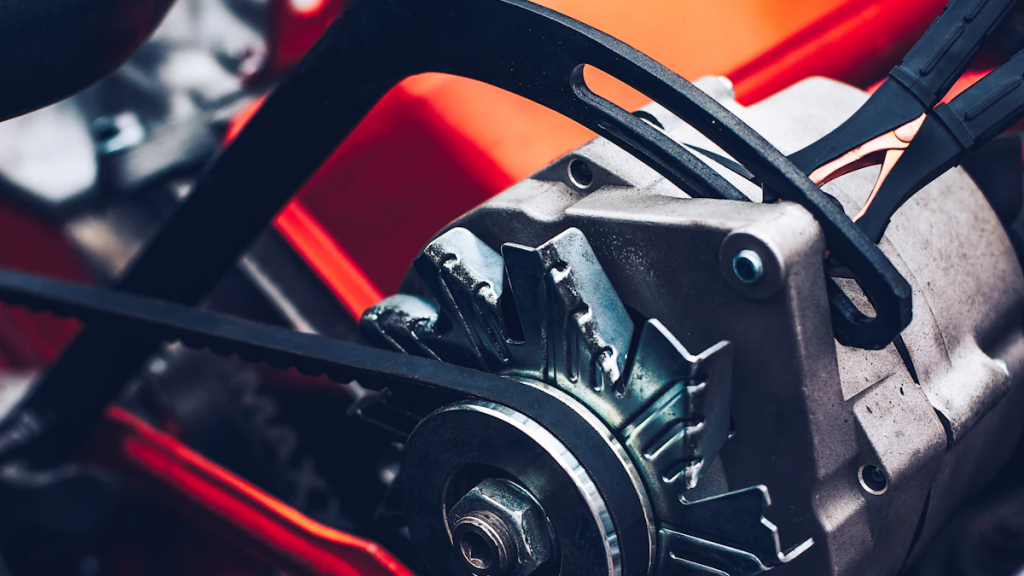In the realm of modern technology, alternators play a pivotal role in power generation and are crucial components in various systems. From automotive applications to free electricity setups, the significance of alternators cannot be overstated. Understanding the differences between permanent magnet alternators and regular alternators is essential for making informed decisions about energy generation.
The alternator market is expected to register a CAGR of over 5% over the forecast period (2021 – 2026). The demand for the alternator is increasing owing to the growing consumption of alternating current in different sectors, such as oil & gas, industrial manufacturing, and power, among others. With a global alternator market expected to reach a value of 29.9 billion U.S. dollars by 2025, it’s evident that this technology is at the forefront of sustainable energy solutions. As we delve deeper into the facts and figures, it becomes clear that exploring these two types of alternators is vital for comprehending their impact on various industries.
The process of generating electricity in alternators is a fascinating interplay of mechanical and electromagnetic principles. As the rotor coil rotates, it induces a magnetic field that interacts with the stator windings to produce an electrical current. This fundamental mechanism, patented by General Motors, underscores the pivotal role of rotor speed and magnetic field intensity in determining the voltage and current characteristics of the generated electricity.
·The rotation of the rotor coil induces a magnetic field.
·This magnetic field interacts with the stator windings to produce electrical current.
·Rotor Coil: Responsible for inducing the magnetic field.
·Stator Windings: Interact with the magnetic field to generate electricity.
Alternators play a crucial role in powering various systems, from automotive applications to renewable energy setups. Their ability to convert mechanical energy into electrical power makes them indispensable components in sustainable energy solutions. The increasing demand for dependable power sources and technological advancements is evident from the projected Compound Annual Growth Rate (CAGR) of more than 6% between 2018 and 2024 for the automotive alternator market.
·Alternators are integral to renewable energy systems.
·They convert mechanical energy into electrical power for sustainable applications.
The speed at which the rotor coil rotates and the intensity of its magnetic field determine the voltage and current characteristics of the electricity generated by alternators.

Regular alternators are designed with field coils that play a crucial role in the generation of electricity. These field coils, when energized by electricity, create a magnetic field that induces the necessary current in the stator windings. This process is essential for converting mechanical energy into electrical power, making regular alternators indispensable in various applications.
·Field Coils: Energized by electricity to create a magnetic field.
·Magnetic Field Induction: Induces current in the stator windings for electrical power generation.
The ability to regulate voltage is a key aspect of regular alternators’ operation. By controlling the strength of the magnetic field through the excitation of the field coils, these alternators can maintain stable voltage output under varying load conditions.
·Control Mechanism: Excitation of field coils regulates the strength of the magnetic field.
·Stable Voltage Output: Ensures consistent performance under different load conditions.
Regular alternators offer distinct advantages in terms of cost-effectiveness and operational maintenance. However, they also come with certain limitations that need to be considered when evaluating their suitability for specific applications.
·Efficiency Gains: High-efficiency alternators can save upwards of 20 percent on fuel costs compared to standard alternators.
High efficiency is a key advantage offered by modern regular alternators, resulting in substantial fuel cost savings.
Maintenance Impact: Improper maintenance or extended maintenance intervals are believed to be responsible for up to 30% of alternator failures in vehicles.
Proper maintenance practices are essential for ensuring optimal performance and longevity of regular alternators.
As the world shifts towards sustainable energy solutions, the exploration of Permanent Magnet Alternators becomes increasingly significant. These alternators offer unique features and characteristics that set them apart from traditional power sources, making them a compelling option for various applications.
One of the defining features of Permanent Magnet Alternators is their magnet-based operation. Unlike conventional alternators that rely on field coils energized by electricity, permanent magnet alternators utilize powerful magnets to induce the necessary magnetic field for electricity generation. This design eliminates the need for an external power source to excite the field coils, resulting in a more straightforward and efficient operation.
Another notable aspect of permanent magnet generators is their lack of slip rings. In traditional alternators, slip rings are used to transfer electrical power between stationary and rotating components. However, permanent magnet alternators eliminate the need for these components, reducing maintenance requirements and potential points of failure in the system.
When comparing Permanent Magnet Alternators with conventional power sources, it becomes evident that they offer substantial efficiency gains. The sustainable electricity produced by permanent magnet alternators contributes to environmental conservation efforts while also providing cost-effective power generation solutions. Additionally, their low maintenance requirements make them an attractive option for long-term use in various applications.
While pmg generators offer numerous advantages, they also present challenges related to voltage regulation. Unlike conventional coil-excited alternators that have the ability to vary excitation for superior voltage regulation, permanent magnet alternators face limitations in this aspect. They may require additional systems or mechanisms to ensure stable voltage output under varying load conditions.
The sustainability and cost-effectiveness of sustainable electricity production make Permanent Magnet Alternators a compelling choice for modern energy needs.
In comparison with traditional power sources, Permanent Magnet Alternators are more environmentally friendly and produce sustainable electricity at a lower cost. Their low maintenance requirements further contribute to their appeal as reliable and efficient power generation solutions.
When pitted against coil-excited alternators, it’s important to note that Permanent Magnet Alternators have higher drag and always require more effort to spin. However, they do not rely on battery power to energize the windings, offering distinct advantages in certain applications.
When comparing the energy output of Permanent Magnet Alternators with regular alternators, one key factor to consider is their performance under different load conditions. The output current of the replacement alternator is about 26% greater than the output current of the prior art alternator at a speed of about 1600 RPMs. This substantial increase in output current highlights the superior energy output capabilities of Permanent Magnet Alternators in varying load conditions.
·The output current of the replacement alternator is about 26% greater than that of the prior art alternator at a speed of about 1600 RPMs. This significant difference underscores the enhanced energy output potential of Permanent Magnet Alternators.
Efficiency plays a crucial role in determining the overall performance and effectiveness of alternators. Small PMA systems already in existence are about 65-68% efficient, while one of the newest lines of big commercial alternators hits about 70% efficiency. In contrast, regular alternators typically operate with efficiencies ranging from 54 to 60 percent. These comparative insights highlight the efficiency gains offered by Permanent Magnet Alternators, especially when compared to traditional power sources.
The higher efficiency ratings exhibited by Permanent Magnet Alternators underscore their superior performance and energy utilization.
Durability and longevity are essential considerations when evaluating alternative power generation solutions. The robust design and long-term reliability make Permanent Magnetic Power Generator an attractive choice for applications requiring sustainable and dependable power generation solutions.
In addition to longevity comparisons, ease of repair is another vital aspect to consider when assessing alternative power generation options. With lower maintenance requirements and fewer moving parts compared to traditional coil-excited alternators, Permanent Magnet Electric Generators offer simplified repair processes and reduced downtime for maintenance activities. Their robust design minimizes potential points of failure within the system, contributing to overall ease-of-repair advantages over regular alternatives.
The simplified repair processes and reduced downtime associated with maintenance activities position Permanent Magnet Alternators as durable and low-maintenance power generation solutions.
ENNENG is a company that specializes in the research and development of various special high & low voltage low-speed high-torque permanent magnet motors. Our permanent magnet generators are designed to provide efficient and reliable power generation solutions for different industries.
One of our notable products is the Wind Power/Water Power Permanent Magnet Generator. Our Wind Power/Water Power Permanent Magnet Generators offer several advantages.
·Firstly, they have many poles, which improve frequency and efficiency, reducing the need for rectifiers and inverters.
·Secondly, the generators are designed using Finite Element Analysis, resulting in a compact structure and low startup torque. This design solves the problem of small wind startup and improves wind energy utilization.
·Additionally, these generators eliminate the need for gear increasers, enhancing reliability and efficiency while reducing maintenance requirements.
·They also feature H class insulation and vacuum pressure impregnation for improved performance and durability.
·With various structures available, such as vertical axis, horizontal axis, internal rotor, external rotor, and plate type, our generators offer flexibility to suit different applications.
·Furthermore, our generators operate with high efficiency throughout the entire speed range and utilize imported high-speed oil-contained bearings for maintenance-free and reliable operation.
·We also offer customization options for voltage, speed, power, and shape to meet specific customer requirements.

When it comes to choosing the right alternator for specific applications, several crucial considerations come into play. The decision-making process involves evaluating the unique requirements of each application and matching them with the strengths and limitations of different alternator types.
Permanent Magnet Alternators are particularly well-suited for applications that prioritize efficiency, sustainability, and low maintenance requirements. Their magnet-based operation and lack of slip rings make them ideal for scenarios where reliability and long-term performance are paramount. For instance, in windmill, free energy magnet generator or water turbine, Permanent Magnet Alternators offer a compelling solution due to their ability to produce sustainable electricity without relying on external power sources.
Considering the specific needs of each application is essential for making an informed decision about the type of alternator that will deliver optimal performance and reliability.
Conducting a comprehensive cost-benefit analysis is integral to selecting the most suitable alternator for a given application. While Permanent Magnet Alternators offer advantages in terms of efficiency gains and reduced maintenance requirements, they may have higher upfront costs compared to regular alternators. However, factoring in long-term operational savings and durability can tilt the cost-benefit scale in favor of Permanent Magnet Alternators for certain applications.
Regular alternators, with their established technology and widespread use, may present lower initial investment requirements but could incur higher operational costs over time due to maintenance needs and lower efficiency levels. Therefore, weighing the initial investment against long-term operational expenses is crucial when assessing the cost-benefit dynamics of different alternator options.
As technology continues to advance at a rapid pace, innovations on the horizon hold promise for further enhancing alternator capabilities and sustainability. The future of alternator technology is poised to witness developments aimed at improving efficiency, reducing environmental impact, and expanding applicability across diverse industries.
Innovative research initiatives are focusing on enhancing the efficiency levels of both permanent magnet and regular alternators through advanced materials and design optimizations. For Permanent Magnet Alternators, advancements in magnet technologies aim to boost energy conversion efficiencies while addressing challenges related to voltage regulation under varying load conditions. Similarly, ongoing research into regular alternators seeks to refine voltage control mechanisms and reduce energy losses during power generation processes.
Moreover, the incorporation of smart grid technologies and digital control interfaces marks a transformative development in alternator technology. These advancements are anticipated to facilitate seamless integration into contemporary power distribution networks, enhancing real-time monitoring and enabling adaptive control capabilities.
Environmental sustainability remains a key driving force behind ongoing advancements in alternator technology. As global efforts towards reducing carbon emissions intensify, both permanent magnet and regular alternators are undergoing developments aimed at minimizing their ecological footprint.
The adoption of eco-friendly materials in manufacturing processes coupled with recyclability considerations is shaping the next generation of sustainable alternator solutions. Additionally, strategies focused on optimizing end-of-life recycling practices for retired alternator units are gaining traction within industry circles as part of broader environmental stewardship initiatives.